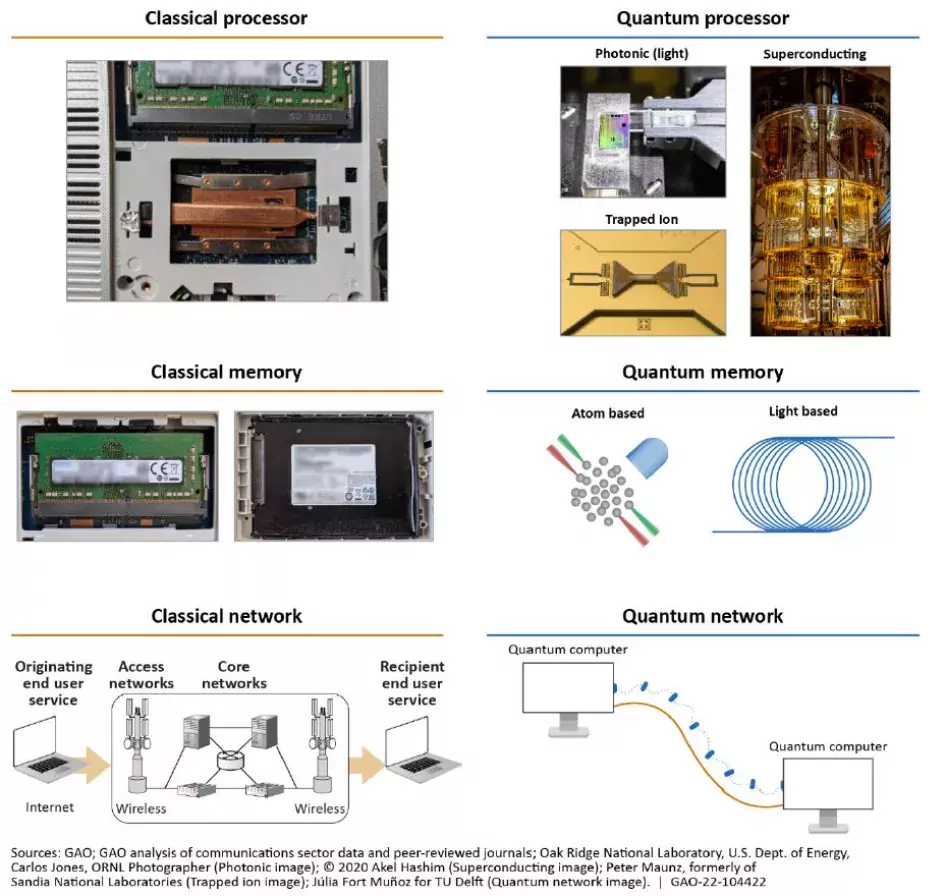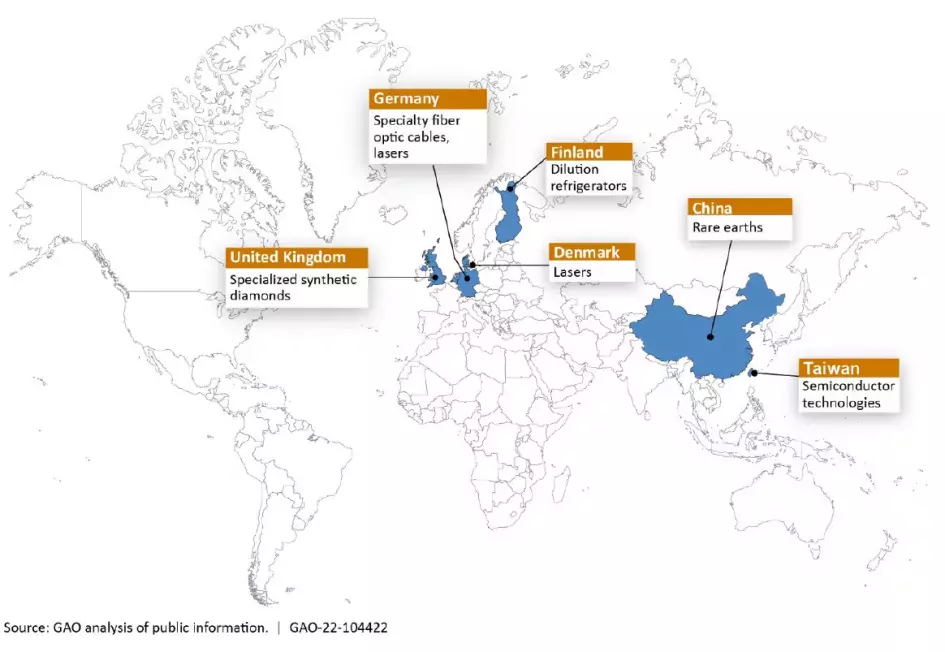The Quantum Leap Hinges on Worker Skills and Supply Chain Limits
Remember that Sci-Fi show Quantum Leap? In the late-1980s/early-90s, Quantum Leap predicted that (in the near future) quantum technologies could be used to, among other things, travel back in time to solve crimes and correct historic wrongs.
Fast-forward to 2021. Where is quantum technology now, and what challenges does it face in its use and development? Today’s WatchBlog post explores our recent report on quantum technologies.
What can quantum technology really do?
Well, not time travel!
Quantum Leap is of course fictional. But, in the near future, quantum technologies have the potential to transform many industries by harnessing the properties of nature at atomic (or very small) scales. For example, quantum computers could help reduce the time needed to create a lifesaving drug by increasing the accuracy and speed of chemistry simulations.
However, in addition to the good it could do, in the wrong hands, quantum technology could also be dangerous. For example, quantum technology could be used by hackers or enemy states to disrupt the privacy of information sent over the internet—potentially stealing secrets—by efficiently factoring extremely large numbers, a difficult mathematical task used in many encryption schemes.
Image

How soon could we see this technology?
While quantum technologies are available for limited uses now, they will likely take at least a decade and cost billions to develop for more complex uses.
We interviewed experts, including federal agency officials about quantum technology’s prospects. They told us about the need for the U.S. to develop a strong quantum workforce and address supply chain issues in order to maintain its leadership position in quantum technology hardware and software development.
What can be done to strengthen the workforce?
Right now, the U.S. educational system does not equip enough graduates with the right skills to undertake complex tasks required for quantum technology development. For example, other countries provide far more training in the production of superconducting circuits, an essential quantum computing component, according to 1 stakeholder. Further, quantum jobs often require skills in fields that don’t normally go together, like engineering and quantum mechanics. As a result, there are more quantum technology jobs than people to fill them.
To build a quantum workforce, the U.S. may need more training capacity in quantum engineering, circuit design, logic, and algorithm development. U.S. quantum firms may also want to hire more foreign nationals, which may be challenging because of visa requirements and the national security implications of quantum technology.
What can be done to address supply chain issues?
The quantum technology supply chain is global and specialized. Given the complexity of the supply chain, if a single link in the chain is unavailable, that could cause technology development delays and other setbacks. For example, quantum computers require super-cooling devices called dilution refrigerators, which are manufactured in Finland.
The quantum technology market is not currently large enough to support the commercial availability of specialized components. Manufacturing facilities, such as foundries, make money by producing a large quantity of an item. The small number of items needed for quantum technology research may not provide manufacturers financial incentive. Quantum foundries, or specialized manufacturing facilities, could help to produce quantum technologies at scale. In particular, they could help develop materials needed to enable quantum technologies, train the quantum workforce, and accelerate quantum technology development.
To learn more about the opportunities of quantum technology and the challenges facing its development, check out our new report.
Image

- Comments on GAO’s WatchBlog? Contact blog@gao.gov
GAO Contacts
Related Products

GAO's mission is to provide Congress with fact-based, nonpartisan information that can help improve federal government performance and ensure accountability for the benefit of the American people. GAO launched its WatchBlog in January, 2014, as part of its continuing effort to reach its audiences—Congress and the American people—where they are currently looking for information.
The blog format allows GAO to provide a little more context about its work than it can offer on its other social media platforms. Posts will tie GAO work to current events and the news; show how GAO’s work is affecting agencies or legislation; highlight reports, testimonies, and issue areas where GAO does work; and provide information about GAO itself, among other things.
Please send any feedback on GAO's WatchBlog to blog@gao.gov.




